Oman is a desert. Per definition, a desert is an area with less than 250 mm of annual precipitation, which is true for the entire country, except for the highest mountains. Still, I believe that if you ask a random European what a desert looks like, they will not describe the landscapes that we saw the last couple of days. Neither turquoise water pools and hanging gardens nor beaches come to mind when you think of deserts. Instead, they will describe what we are about to experience next: red dunes stretching out to the horizon, hot sand under our feet, an unforgiving sun in a clear blue sky, a landscape so barren of vegetation that you wonder if anything can survive in it.
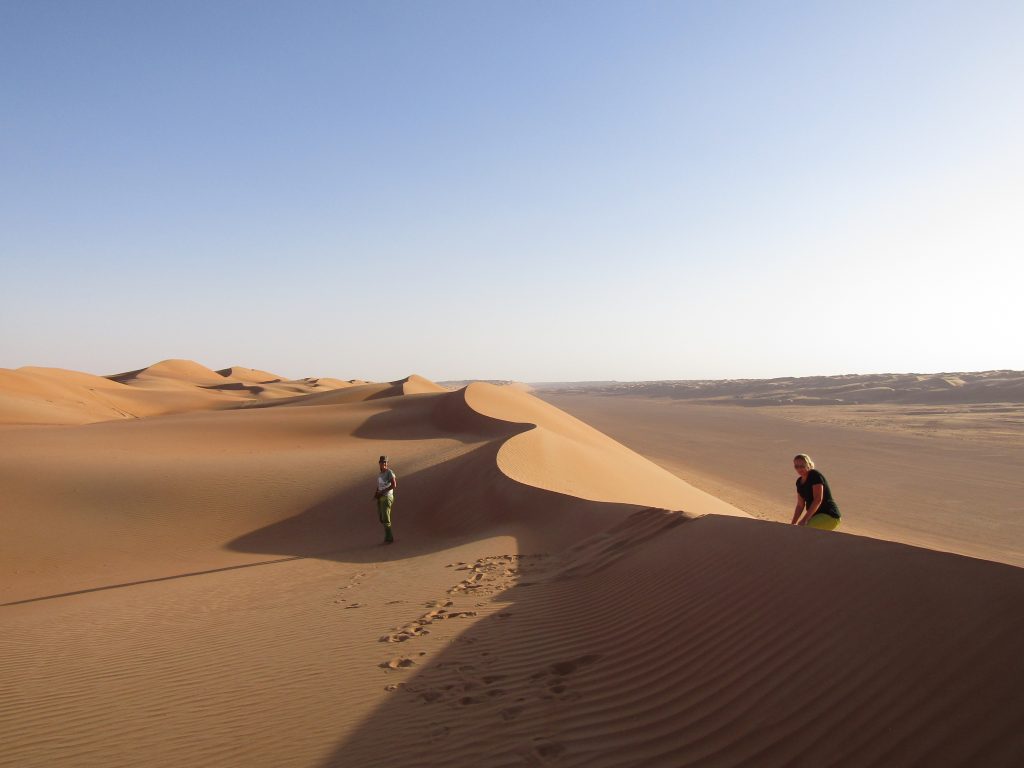
Welcome to Wahiba – the giant sand box. © Michaela Falkenroth
Without question, the Wahiba Sands are one of the highlights of the excursion. The dunes are all fossil, meaning that they do not grow at the moment. Their linear shape is a product of one primary wind direction and can easily be spotted on satellite imagery. On the ground, a row of six cars speeds through one of the dune valleys. We are on our way to our campsite. We get the feeling that the legend of flying carpets must have something to do with the feeling of the Land Cruisers swimming on the sand. This year we are lucky – no wind – perfect conditions to climb the dunes and watch the sunset from the top of the world.

Dunes are difficult to climb but the view is worth it. © Michaela Falkenroth
Although the Wahiba is a truly alien environment, you do not necessarily get the feeling of travelling to a remote planet, especially not on weekends, when many Omanis go there to camp and dash up and down the dunes in their Jeeps. For the true Martian experience, you need to go further, to a place that can only be visited when there is no wind just like on Saturday morning.
After a short sit in with the nomad community for dates, coffee and camel riding, the fellowship of the ABC/J goes on the long trip to Qarat al Kibrit – the lonely mountain. In this case the lonely hill is a salt dome of epic proportions that lies amidst of a desolation that would make a certain dragon blush. Through the upwards movement of the salt, which is the oldest salt on the Arabian Peninsula by the way, around 600 million years old sediments were dragged to the surface. These rocks are source rocks of oil deposits that are mined in the area. In the far distance, countless oil rigs stick out of the surface. Qarat al Kibrit is not only the perfect place to hear desert foxes howl in the night and to dig up your own salt, but also to learn about Oman`s oil reserves. Not all who wander are lost.
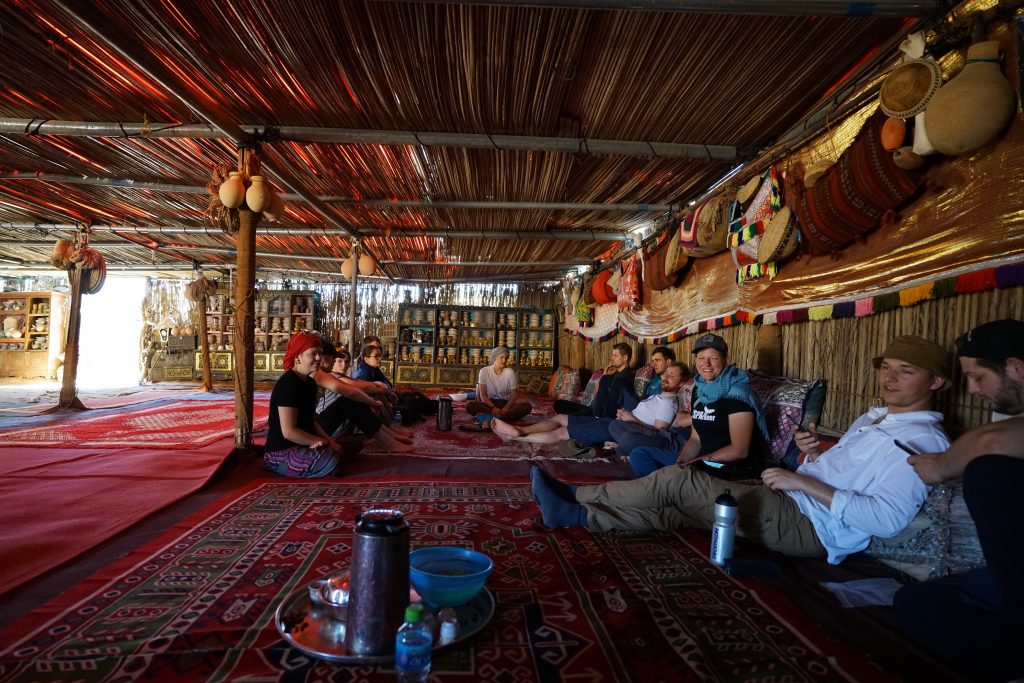
Dates and coffee with the desert nomads. © Kim Hußmann
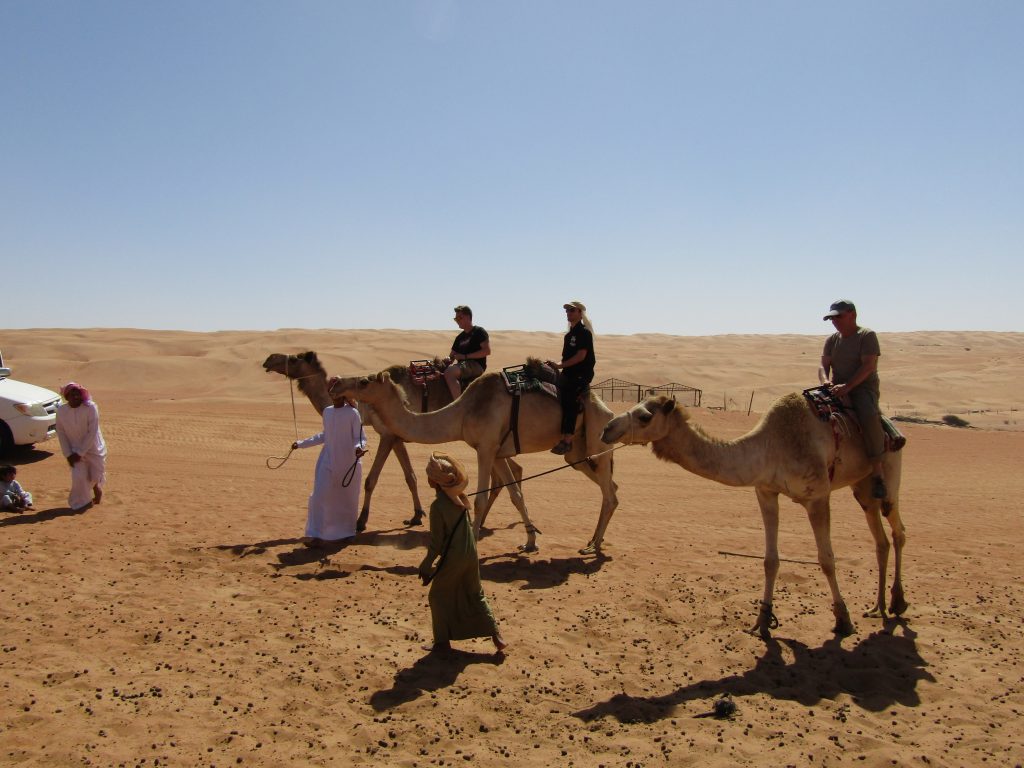
Not as smooth as the cars but still an important mean of transportation. © Michaela Falkenroth
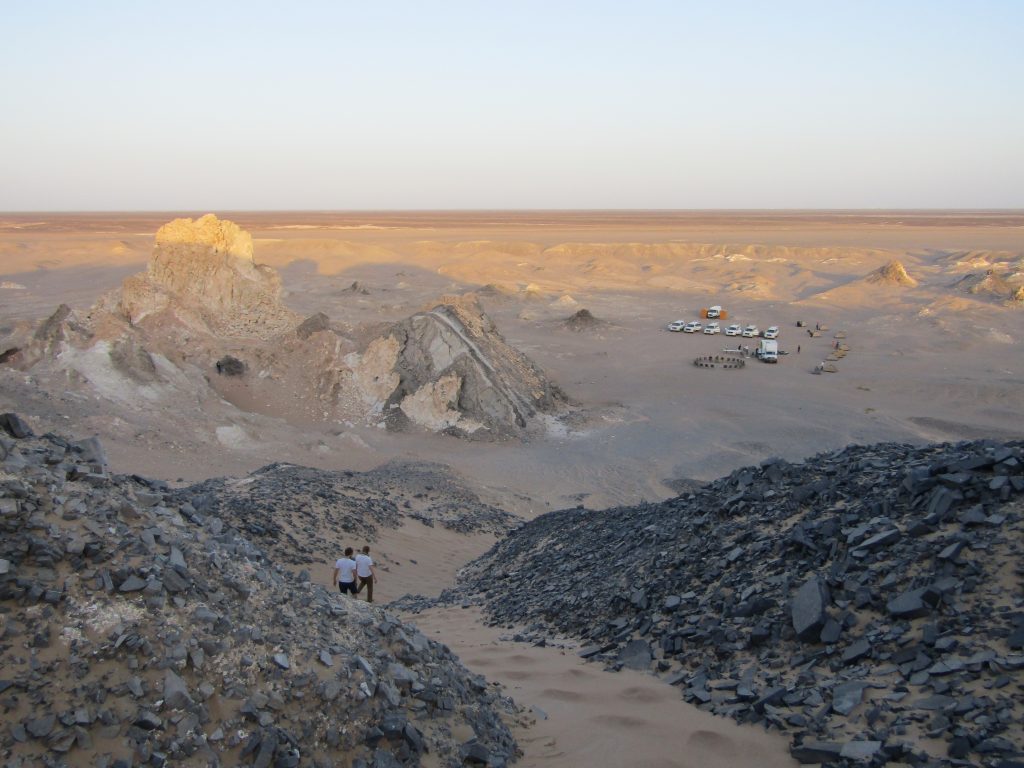
Our camp amidst the desolation of Qarat al Kibrit. © Michaela Falkenroth
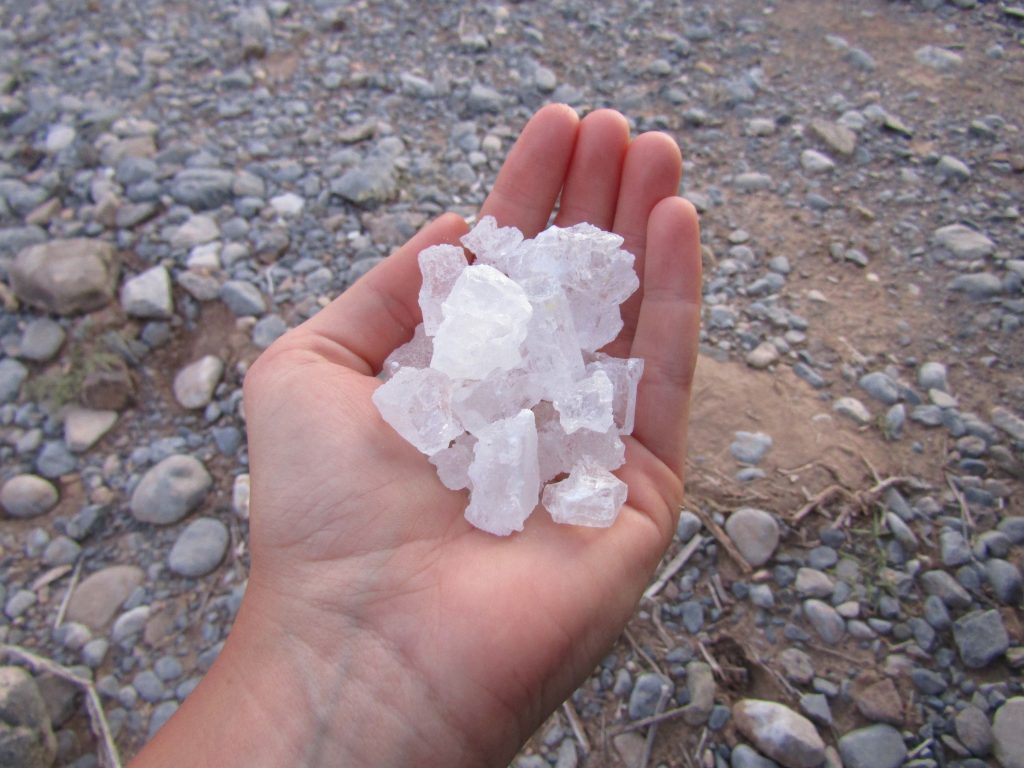
Freshly mined halite (rock salt) from Qarat Kibrit. © Michaela Falkenroth
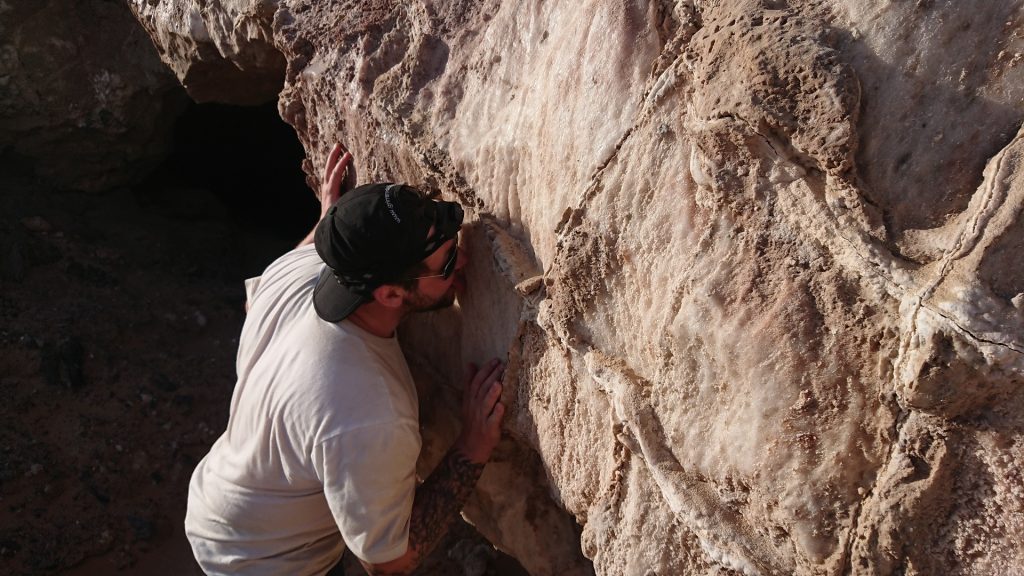
A true geologist can`t keep his tongue off of anything – how does it taste – salty. © Gösta Hoffmann
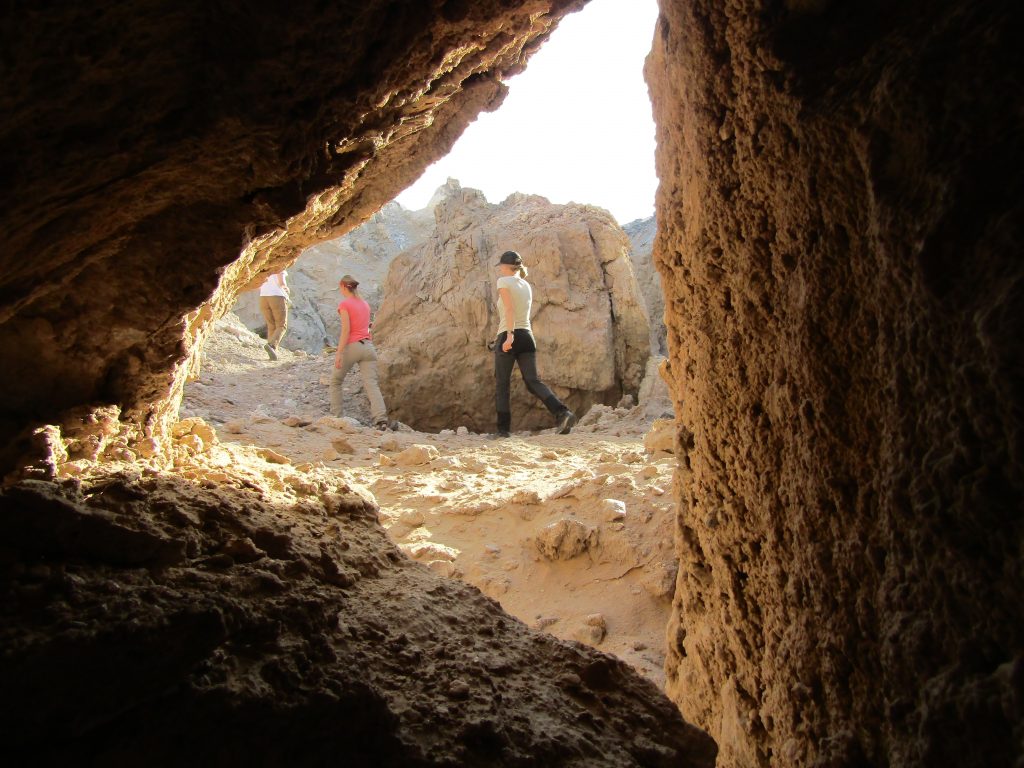
Exploring the abandoned quarries of Qarat Kibrit. © Michaela Falkenroth
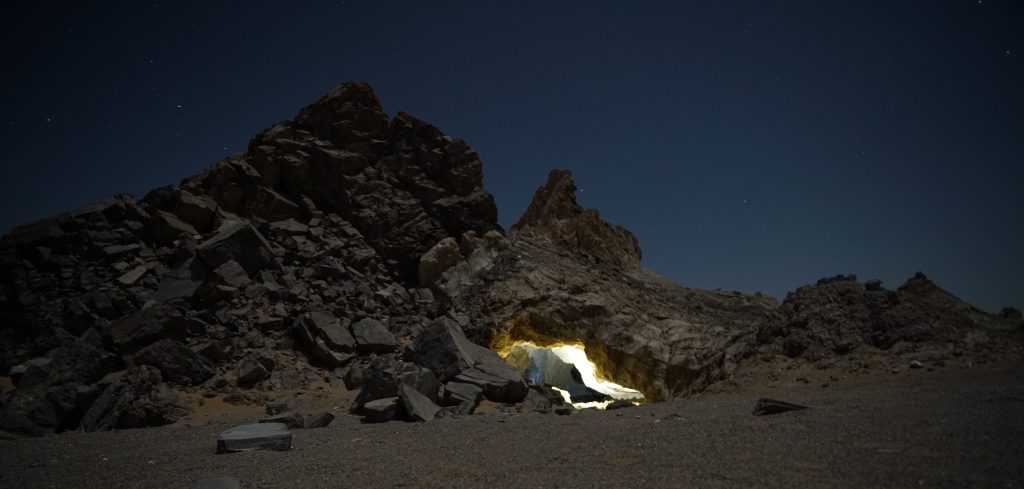
At the salt dome, the nights are only disturbed by the howls of desert foxes. © Kim Hußmann
On Sunday morning the salt dome becomes lonely again – we leave early to return to civilisation. Our next stops are the souq in Nizwa, the mountain oases and the abandoned city of Al Hamra, see you there!

It is such an enrichment to read the blog. Thank you for the great impressions that you share with us. Have you only heard or seen the desert foxes?